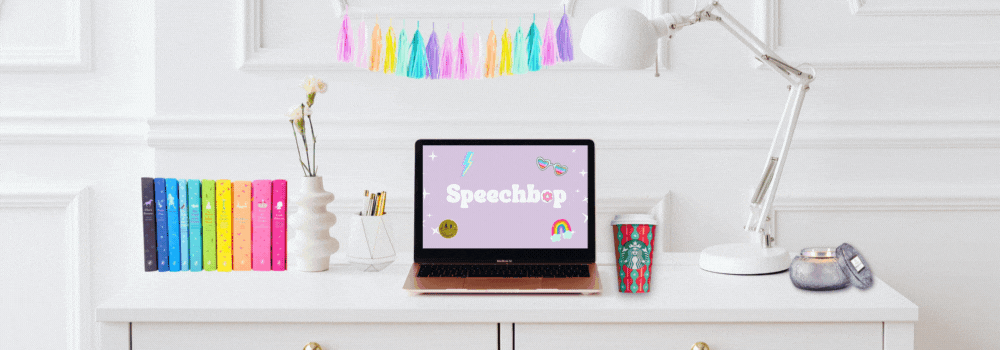Group Therapy - Challenges and Solutions - Guest Blog!

I have to admit I sometimes dread when I get assigned children with completely different goals to be placed in a group together. It seems unethical, overwhelming, and on some days I feel that I ignore one child’s goals in order to target the specific needs of others. AND THAT FEELS TERRIBLE.
A couple of ideas I’ve used to ensure that everyone’s goals are targets, you keep track of the target goal for each child, keep everyone’s attention and have a good time, without frustration:
1) Make sure you have the specific goals for each student.
a. Lay out each IEP and compare goals. Sometimes they IEP may have some similar goals that are appropriate (i.e. pragmatic language, social skills, following directions). If the kids have a split mandate (receive both individual and group therapy), shared goals can be targeted in group and individual goals can be targeted in individual sessions.
2) Keep track of goals and progress.
a. Make a tracking sheet that works for you with target goals for each child.
b. I like to use tracking sheets that refer to where you seat the kids. It allows me to take notes, make check marks, tally marks without having to look away from the group for very long.
3) Maintain everyone’s attention:
a. A major problem I have is keeping attention. When it’s not a child’s turn, his/her attention often wavers. To combat this I have used:
i. The Superflex Super Hero from Social thinking by Stephanie Madrigal and Michelle Garcia Winner. They suggest to avoid the Brain Eater, who makes it hard for a student to focus and makes his brain “roll away” from the group, a student should turn their body and eyes towards the group, use fidget toys to keep the body busy and the brain focused, and notice when you are thinking about something else and try to get it refocused.
ii. Help kids who have difficulty attending by giving them an important job. They can be in charge of making sure others answers are correct, giving out tokens, responsible for writing down what happened. This important job will make them feel good, and give them a concrete task to focus on.
4) Have a good time!!!
a. Group non-competitive games such as those made byhttp://www.superduperinc.com/ can target multiple goals within the same game board. These games are motivating because the kids can early token, there is no end so you can go around again and again, and they are easily modified to use any set of stimuli (artic cards, labeling picture cards, reading tasks). Here are a few of my favorites:
i. Turtle talk http://www.superduperinc.com/products/view.aspx?pid=GB137&stid=
ii. Go for the Dough http://www.superduperinc.com/products/view.aspx?pid=GB339
iii. Make your own paint chip board http://thrillinglythrifty.blogspot.com/2010/08/toddler-friendly-board-game-using-paint.html
b. Barrier Games can both be bought and made. They allow for children to both follow and give directions, understand and use prepositions and basic concepts, use longer utterances, increase vocabulary, and can be adapted for many other uses.
i. A free resource for pictures that are great for barrier games is KizClubhttp://www.kizclub.com/stories.htm . This website has manipulative for most common stories that we read (i.e. Go Away Big Green Monster). I would suggest printing out as many sets as group members and give each student a role. Some students can give directives; other students can follow the directives (everyone should have similar looking pictures at the end). As a therapist you can monitor which child doesn’t understand the directive.
ii. To make these easier the therapist can premake a scene and if needed can make directive cards with pictures and visual supports (ie put the fish next to the whale)
c. Cooking Activities make great application of everything else we teach and the children are so excited for special cooking days. I worked with a teacher last year that had a special cooking day every week. The students voted what they wanted to make, and followed visual recipes (with the help of adults) to make delicious and special treats.
i. http://visualrecipes.com/ has real pictures for some recipes (some can be tough to do in a therapy room) if you don’t have a hot plate or microwave.
ii. http://www.speakingofspeech.com/Cooking_Materials.html These use boardmaker symbols with simple steps and have “no-cook” options.
iii. http://familyfun.go.com/recipes/cooking-with-kids/making-food-fun-photo-gallery-848181/view-all/ playful recipes with photo of finished product.
iv. Do the activity with kids who can read and don’t need visuals, take pictures of each step and use the pictures for students who do benefits from visuals.
v. Cooking makes for great recap activities, sequencing of all necessary steps, and some kids can write up the recipe after looking at the pictures.
I hope this has been helpful, and that you will feel a bit more prepared when challenged with a group of kids that aren’t necessarily the best fit.
If you have any questions, comments or suggestions please don’t hesitate to email me atviky@speechlanguageplay.com and visit me at www.speechlanguageplay.com
